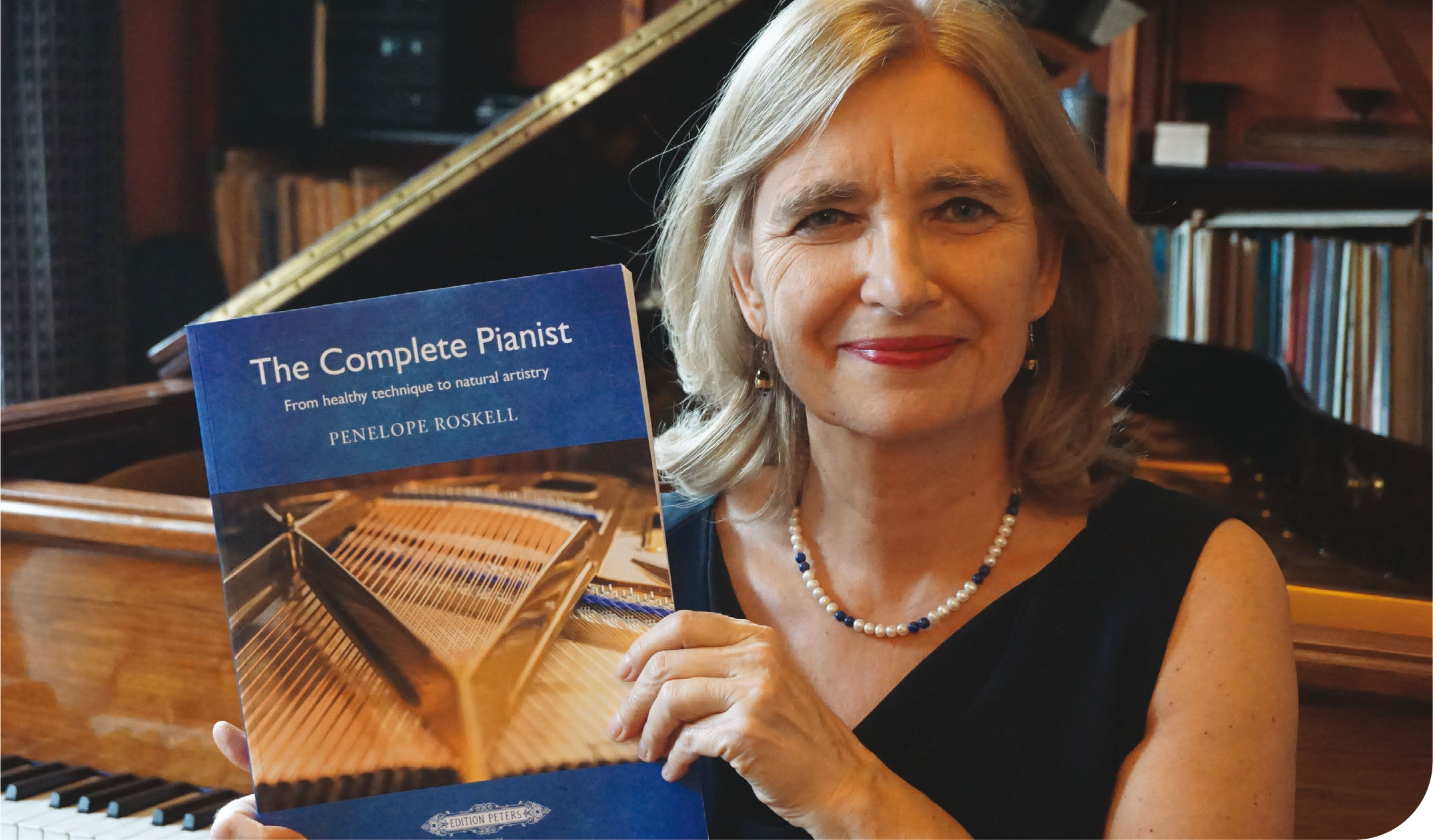
In The Complete Pianist, Penelope Roskell distils a lifetime's experience of piano performance, research and teaching. Roskell is professor of piano and piano pedagogy at Trinity Laban Conservatoire of Music and Dance and at the Royal Welsh College of Music and Drama. As a soloist, she has played in major concert halls around the world. She is also the leading specialist in healthy piano playing, and is an advisor to the British Association for Performing Arts Medicine (BAPAM). She has studied with pupils of Schnabel, Neuhaus, Cortot, Arrau, Busoni and Fischer, and has also worked closely with a cranial osteopath and yoga teacher. (Her ‘Yoga for Musicians’ DVD is an outstanding contribution to the understanding of how yoga principles can be applied to instrumental playing to encourage a healthy and stress-free technique.)
There are many other books on developing piano technique; from Matthay to Kendall Taylor, as well as the numerous books of studies and exercises written for our improvement by Brahms, Czerny, Hanon, et al. However, none of them have dared to put the word ‘Complete’ in their titles. The Complete Pianist follows a natural progression from the fundamentals of piano playing to later chapters on the whole-body approach and performance. It includes more than 500 pages of text explaining and guiding pianists through technical challenges; a photocopiable checklist and a practice chart; 250 newly devised exercises ranging from basic to advanced techniques; and more than 300 free online video demonstrations for each exercise accessed via a QR code (use a smart-phone or tablet with the appropriate app – mine is free and is called simply QR Scanner), or online via editionpeters.com/completepianist.
The Complete Pianist is not cheap compared to a slim volume of exercises, nor is it light – weighing in at nearly 2kgs – but I suggest that it is extremely good value for money. The book begins with an introduction explaining why it was written, how to use it, and how it applies to and supports piano teachers. This is followed by three main chapters, which each cover topics in detail using material ranging from beginner to advanced. (‘A Healthy Technique’, ‘Natural Artistry’, ‘Healthy and Inspired Performance’.)

Holistic approach: Penelope Roskell
The healthy technique chapter explains the whole-body approach, finger touch and tone production, scales and arpeggios, playing cantabile, detached playing, fundamentals of chord playing, rotation, lateral movements, and the all-round pianist. The chapter on artistry explains melody, harmony and structure; tone and texture; rhythm; pedalling; playing with other musicians; and learning, memorising and sight-reading. The chapter concerned with healthy and inspired performance discusses and details preventing injury; pianists with small hands; releasing forearm tension, developing strength naturally; strengthening the hand; strengthening the fingers and thumb; hypermobility; recovering from a playing-related injury; accuracy and the myth of perfection; confidence, and many other topics.
Nothing is left unexplained; everything that has ever concerned a pianist is dealt with, and done so in clear language with excellent supporting online demos, written-out examples from the core piano repertoire, and original effective exercises. For example, in the ‘Natural Artistry’ chapter there is a section on interpreting slurs in classical music, explaining that most slur markings in this period are based on the bowing of string instruments. The printed example is of a section of the first movement to Mozart's Sonata in F major K332. The online demo enlightens us further showing an overhead camera view of Roskell playing this with a fluid wrist and effective phrasing. Thus, with every technique detailed throughout the book we can read, see the music, and then hear and watch. Fortunately, there are also appendices with diagrams and explanations of the anatomical parts referred to in the book, and a glossary of the technical terms and language Roskell uses throughout the text.
So who needs this book and how should they use it? Roskell succeeds in making each chapter relevant to piano students at all levels as well as their teachers. It can be used by self-taught pianists, but will be of more benefit if used alongside regular lessons. Teachers can either read it from beginning to end or dip into relevant chapters and sections as needs arise. I found that as I read through it, various sections leaped out at me for different students and their challenges. I think The Complete Pianist will become a standard text for pianists and teachers for years to come.








